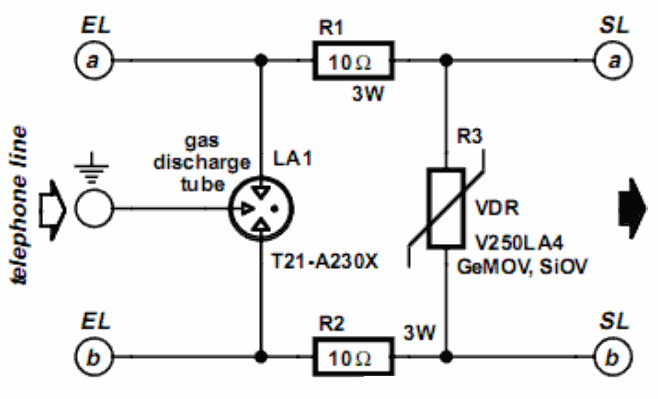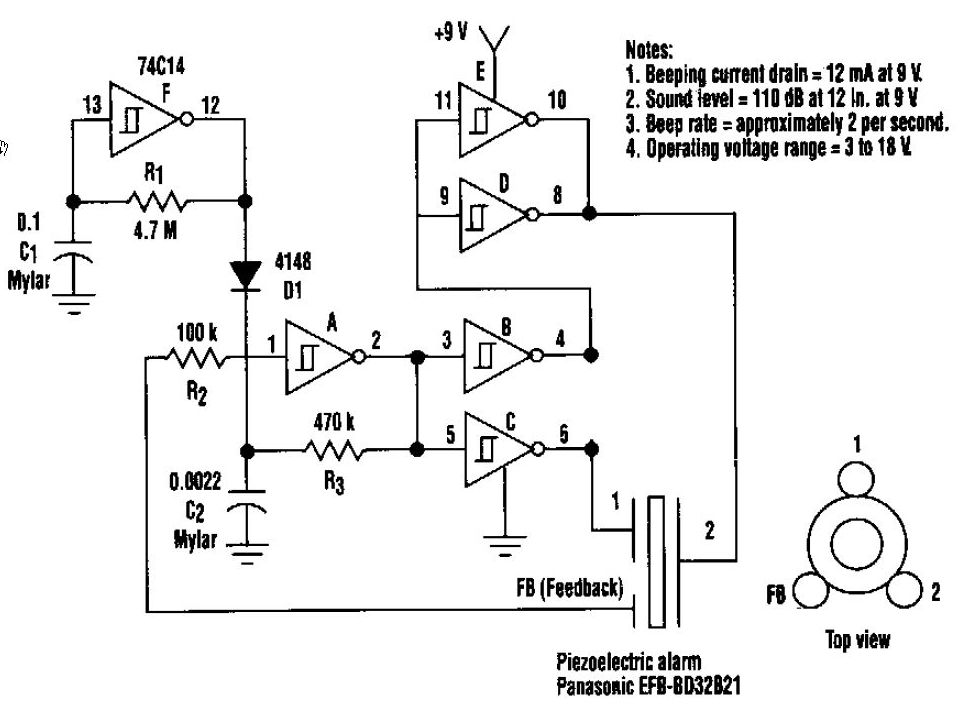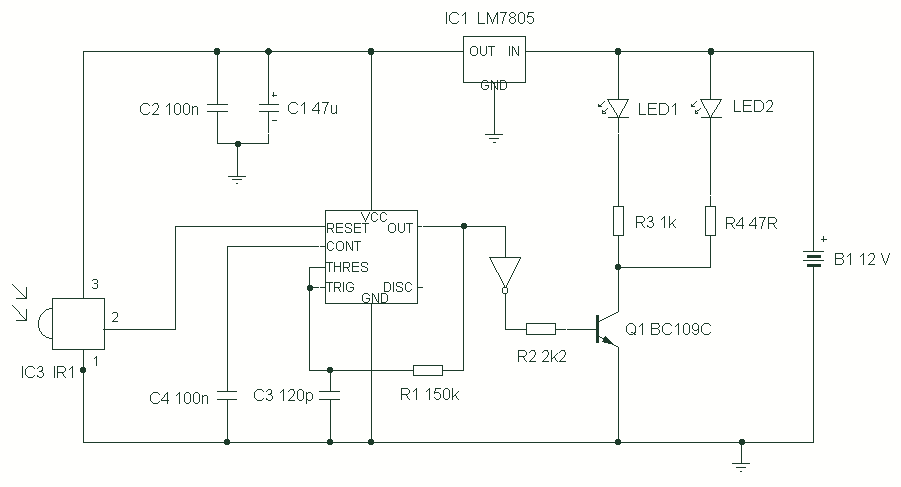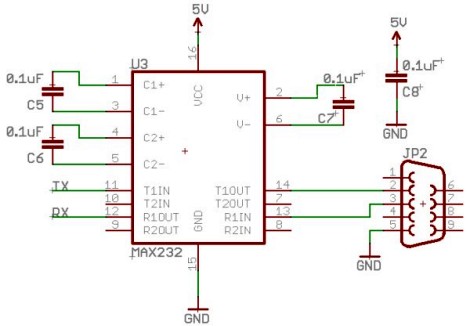
SIMPLE INVERTER CIRCUIT 230V

The timer IC (NE555) is configured as an astable multivibrator in this circuit. It generates an alternating non-sinusoidal output waveform as soon as a supply voltage of 12V is applied. Therefore, alternating voltage is produced from direct current (battery). The output from these transistors is then fed to the input (primary) of a step-up transformer. This will upconvert the input voltage to the desired level of 230V.
The NE555 timer, when configured in the astable mode, operates continuously without any external triggering. It alternates between its high and low states, producing a square wave output. In this circuit, the frequency and duty cycle of the output waveform can be adjusted by changing the values of the timing resistors and capacitor connected to the NE555. The output frequency can be calculated using the formula:
\[ f = \frac{1.44}{(R1 + 2R2)C} \]
Where \( R1 \) and \( R2 \) are the resistances in ohms, and \( C \) is the capacitance in farads. This output is a square wave, which is suitable for driving a transformer.
The transistors in the circuit act as switches, amplifying the output from the NE555 timer to a level sufficient to drive the primary winding of the step-up transformer. When the transistors are turned on by the NE555 output, they allow current to flow through the primary winding of the transformer, inducing a higher voltage in the secondary winding due to the transformer's turns ratio.
The step-up transformer is critical in converting the low voltage (12V) output from the circuit to a higher voltage level (230V) suitable for various applications, such as powering AC devices. The transformer must be rated appropriately to handle the power requirements and ensure safe operation.
Overall, this circuit effectively demonstrates the conversion of direct current into a higher alternating voltage using a timer IC, transistors, and a step-up transformer, making it a valuable design for applications requiring voltage amplification.The timer IC(NE555) is wired as an ASTABLE MULTIVIBRATOR in this circuit. It will generate Alternating non sinusoidal output wave form at the instant we giving supply Voltage(12V). Thus primarily we generated Alternating Voltage from direct Current (Battery). The output from these transistors are again fed to the input(primary) of a Stepup Transformer. This will upconvert the input Voltage to desired level (230V). 🔗 External reference
The NE555 timer, when configured in the astable mode, operates continuously without any external triggering. It alternates between its high and low states, producing a square wave output. In this circuit, the frequency and duty cycle of the output waveform can be adjusted by changing the values of the timing resistors and capacitor connected to the NE555. The output frequency can be calculated using the formula:
\[ f = \frac{1.44}{(R1 + 2R2)C} \]
Where \( R1 \) and \( R2 \) are the resistances in ohms, and \( C \) is the capacitance in farads. This output is a square wave, which is suitable for driving a transformer.
The transistors in the circuit act as switches, amplifying the output from the NE555 timer to a level sufficient to drive the primary winding of the step-up transformer. When the transistors are turned on by the NE555 output, they allow current to flow through the primary winding of the transformer, inducing a higher voltage in the secondary winding due to the transformer's turns ratio.
The step-up transformer is critical in converting the low voltage (12V) output from the circuit to a higher voltage level (230V) suitable for various applications, such as powering AC devices. The transformer must be rated appropriately to handle the power requirements and ensure safe operation.
Overall, this circuit effectively demonstrates the conversion of direct current into a higher alternating voltage using a timer IC, transistors, and a step-up transformer, making it a valuable design for applications requiring voltage amplification.The timer IC(NE555) is wired as an ASTABLE MULTIVIBRATOR in this circuit. It will generate Alternating non sinusoidal output wave form at the instant we giving supply Voltage(12V). Thus primarily we generated Alternating Voltage from direct Current (Battery). The output from these transistors are again fed to the input(primary) of a Stepup Transformer. This will upconvert the input Voltage to desired level (230V). 🔗 External reference





